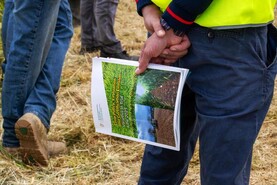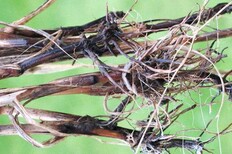Barley yellow dwarf virus (BYDV) continues to be one of the most significant viral threats to cereal crops worldwide. In Ireland, managing this disease is becoming increasingly complex due to changes in aphid populations, the emergence of insecticide resistance and the predominance of different BYDV species. With restrictions on chemical control tightening – particularly following the EU ban on neonicotinoid seed treatments – and a broader shift towards more sustainable farming practices, Integrated Pest Management (IPM) strategies are under increasing pressure to deliver effective solutions.
At Crops and Technology, researchers from Teagasc Oak Park will present recent findings from research into BYDV transmission, aphid resistance and varietal tolerance in Irish barley crops. This research combines extensive field data, insect monitoring, virus diagnostics and variety evaluations to better understand how these elements interact under Irish growing conditions.
A key area of focus of the research was related to the emergence of partial resistance to pyrethroid insecticides in the grain aphid, a major vector of BYDV. The research was tasked with finding out if pyrethroid resistance has become more prevalent following the withdrawal of neonicotinoids, and are clones exhibiting full resistance beginning to emerge in the field?

Research into BYDV at Teagasc, Oak Park.
In response to anecdotal reports linking resistant aphid clones to increased BYDV outbreaks, Oak Park researchers conducted detailed laboratory experiments to determine if resistant clones were more efficient at transmitting BYDV than their susceptible counterparts. Additionally, life-history studies were undertaken to assess whether insecticide resistance comes with biological trade-offs – such as reduced reproductive rates and lower overall fitness of resistant aphids in the absence of insecticides.
Another major strand of the work involves evaluating how well BYDV-tolerant barley varieties perform against the dominant virus species in Ireland. While many commercial varieties have been bred with tolerance to BYDV-PAV, findings in Ireland suggest that BYDV-MAV is the more prevalent species here, but what is the impact of this? Current research is assessing how the new genetics perform under Irish conditions in order to inform future breeding strategies and farmer decision-making on variety selection.
Together, these findings are contributing to the development of the next generation of decision-support tools for BYDV control and more locally relevant IPM approaches for Irish growers.
At the stand, you’ll learn about
How resistance to pyrethroids is evolving in Irish aphid populations.Differences in virus transmission efficiency between resistant and susceptible aphids.Fitness trade-offs associated with carrying insecticide resistance.Field insights into the effectiveness of BYDV-tolerant barley lines.
Barley yellow dwarf virus (BYDV) continues to be one of the most significant viral threats to cereal crops worldwide. In Ireland, managing this disease is becoming increasingly complex due to changes in aphid populations, the emergence of insecticide resistance and the predominance of different BYDV species. With restrictions on chemical control tightening – particularly following the EU ban on neonicotinoid seed treatments – and a broader shift towards more sustainable farming practices, Integrated Pest Management (IPM) strategies are under increasing pressure to deliver effective solutions.
At Crops and Technology, researchers from Teagasc Oak Park will present recent findings from research into BYDV transmission, aphid resistance and varietal tolerance in Irish barley crops. This research combines extensive field data, insect monitoring, virus diagnostics and variety evaluations to better understand how these elements interact under Irish growing conditions.
A key area of focus of the research was related to the emergence of partial resistance to pyrethroid insecticides in the grain aphid, a major vector of BYDV. The research was tasked with finding out if pyrethroid resistance has become more prevalent following the withdrawal of neonicotinoids, and are clones exhibiting full resistance beginning to emerge in the field?

Research into BYDV at Teagasc, Oak Park.
In response to anecdotal reports linking resistant aphid clones to increased BYDV outbreaks, Oak Park researchers conducted detailed laboratory experiments to determine if resistant clones were more efficient at transmitting BYDV than their susceptible counterparts. Additionally, life-history studies were undertaken to assess whether insecticide resistance comes with biological trade-offs – such as reduced reproductive rates and lower overall fitness of resistant aphids in the absence of insecticides.
Another major strand of the work involves evaluating how well BYDV-tolerant barley varieties perform against the dominant virus species in Ireland. While many commercial varieties have been bred with tolerance to BYDV-PAV, findings in Ireland suggest that BYDV-MAV is the more prevalent species here, but what is the impact of this? Current research is assessing how the new genetics perform under Irish conditions in order to inform future breeding strategies and farmer decision-making on variety selection.
Together, these findings are contributing to the development of the next generation of decision-support tools for BYDV control and more locally relevant IPM approaches for Irish growers.
At the stand, you’ll learn about
How resistance to pyrethroids is evolving in Irish aphid populations.Differences in virus transmission efficiency between resistant and susceptible aphids.Fitness trade-offs associated with carrying insecticide resistance.Field insights into the effectiveness of BYDV-tolerant barley lines. 






 This is a subscriber-only article
This is a subscriber-only article










SHARING OPTIONS: